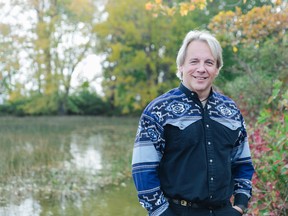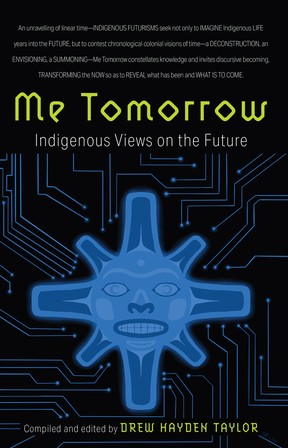Editor Drew Hayden Taylor, an award-winning playwright and writer, has compiled a valuable and welcome addition to our national conversations on reconciliation.

Reviews and recommendations are unbiased and products are independently selected. Postmedia may earn an affiliate commission for purchases made through links on this page.
article content
Me Tomorrow: Indigenous Views of the Future
Announcement 2
article content
drew hayden taylor (editor) | Douglas & McIntyre (Madeira Park, BC, 2021)
$22.95 | 211 pp.
For most non-indigenous Canadians, when we think of indigenous peoples, we think of the many horrors of colonization, past and present.
We think of residential schools, the 1960s Scoop, plague blankets, dirty water, missing women, intergenerational trauma, and addiction. Or we idealize the indigenous past, covering the cake of injustice with cloying images of the noble savage.
Drew Hayden Taylor, an award-winning playwright, novelist, screenwriter, and journalist based in the Curve Lake First Nation in central Ontario, wants to expand our vision of indigenous possibility. At Me Tomorrow, Taylor, acting as editor, has collected statements from 15 prominent indigenous leaders, writers, and activists. It is a welcome and valuable addition to our national conversations on reconciliation.
Announcement 3
article content
One of the many treasures in this remarkable collection is a statement by Lee Maracle. Maracle, who died last year after a stellar career as an author and activist, writes in the collection’s final essay: “A hundred years from now we will be more united than ever on this island… Our young people will lead the way, back to our beliefs and forward towards their humanity.”
Taylor has compiled a powerful chorus of voices, ranging from a coda by the renowned elder and genius Maracle to Autumn Peltier, a teenage Anishinaabe water rights activist, a young woman charting a vision for her own future. Others adding to this instructive and often moving chorus of voices include Cree jurist and former member of parliament Romeo Saganash, who helped draft the United Nations Declaration on the Rights of Indigenous Peoples, a document invoked by many of the essays collected here. Another major contributor is T’Sou-k Nation artist Jordanna George, whose stunning visual “Baseplate” graces the book’s cover.
Announcement 4
article content

Many of the essays in the book nod to the indigenous teaching that all decisions must consider the seven generations that follow a decision. In general, this teaching is invoked in the context of creating a sustainable future for all by implementing such careful planning.
A harsh and angry essay by Clarence Louie, long-time elected head of the Osoyoos Indian Gang, is both a skeptical view of seventh-generation teaching and a call some readers may find unconvincing for entrepreneurial solutions to the suffering of His town. This collection insists that we all remember that indigenous peoples are not monolithic in their views of the future and learn to listen with respect to all voices that are raised.
ad 5
article content
Highly recommended.
Tom Sandborn lives and writes in Vancouver. He welcomes comments and story suggestions from him at [email protected]
-
Teacher and students point to First Nations 101 as an important manual in discussions of social justice
-
Indigenous musicians rock reconciliation, resistance, and revitalization in a variety of ways
-
Five Little Indians of Kamloops Author Voted Canada Reads 2022 Winner
-
Read more about books and authors
More news, less ads, faster loading time: Get unlimited, ad-lite access to the Vancouver Sun, Province, National Post, and 13 other Canadian news sites for just $14/month or $140/year. Subscribe now through vancouver sun either The province.



